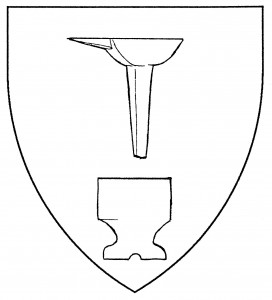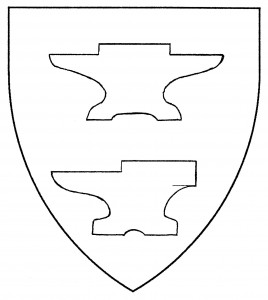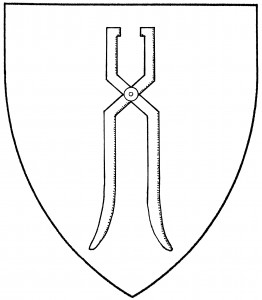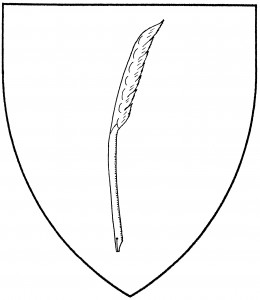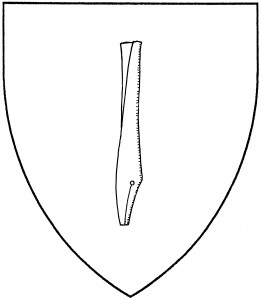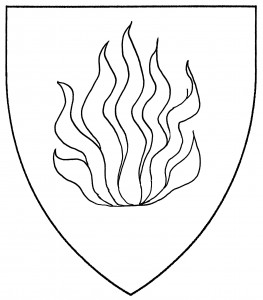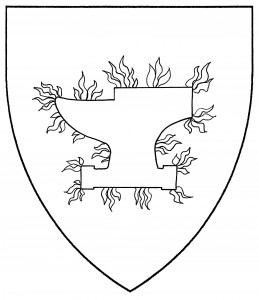An anvil is an iron block on which metalware is hammered into shape. It’s a period charge, found in the arms of Wolstone, temp. Henry VI [DBA1 9]. In English heraldry, the unmodified term “anvil” refers to the armorer’s anvil [Franklyn 12]: portable, with a spike on the bottom for fixing it in place during use. If this form is intended in the Society, it must be explicitly blazoned.
In Society heraldry, the unmodified term “anvil” usually refers to the blacksmith’s anvil. The number of horns, unless specified, is left to the artist; both double-horned anvils (also called “bickerns”) and single-horned anvils are documented period artifacts. A “square anvil” is one with no horns.
The Armorer’s Guild of Østgarðr bears: Gules, a bend Or between a hammer bendwise and a bickern argent.
George Edward Archer bears: Argent, three anvils sable.
Balin the Fairhaired bears: Sable, a square anvil within an annulet Or.
Sven Gunnarsson of Fjathrundaland bears: Argent, an armorer’s anvil sable and a chief embattled gules.
